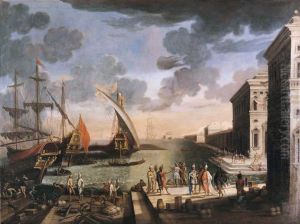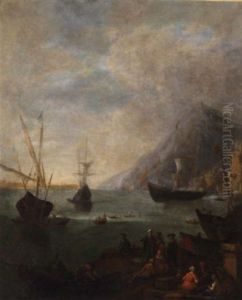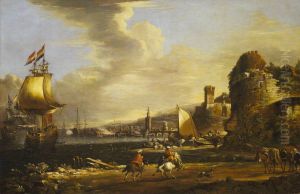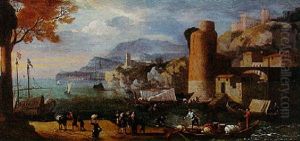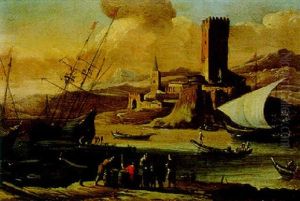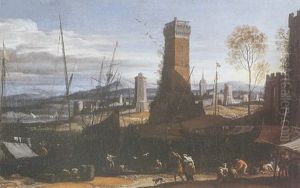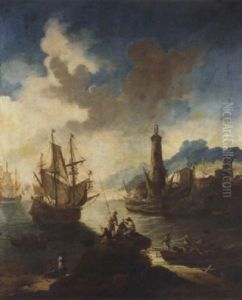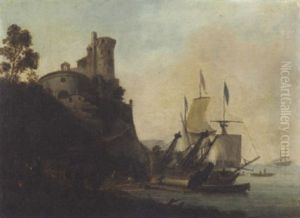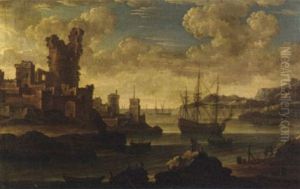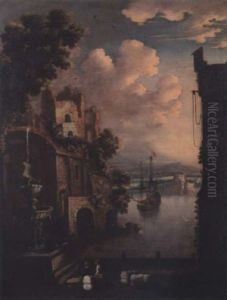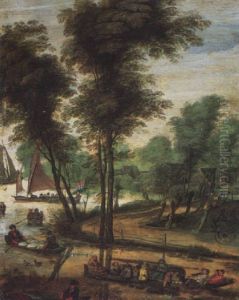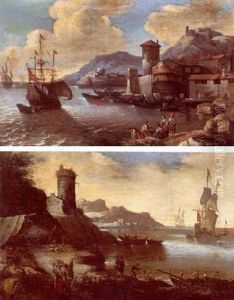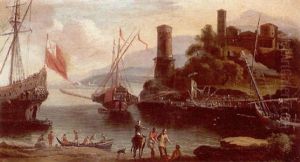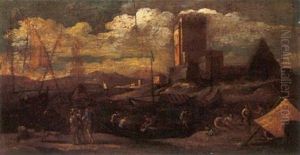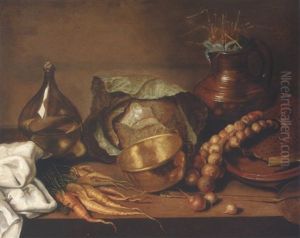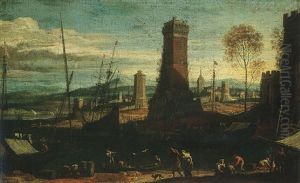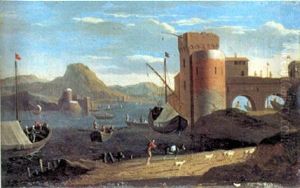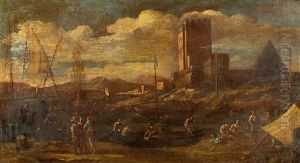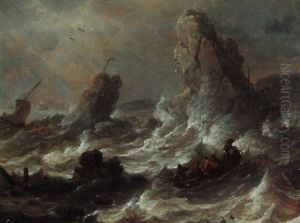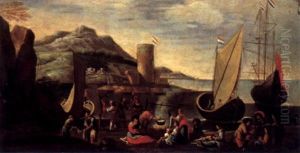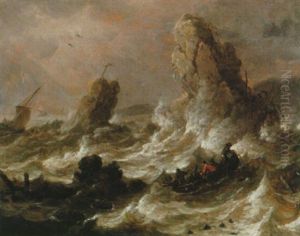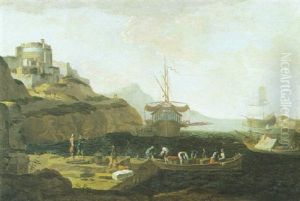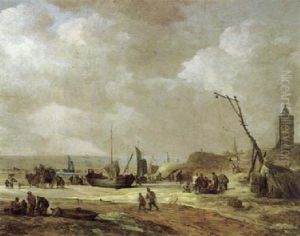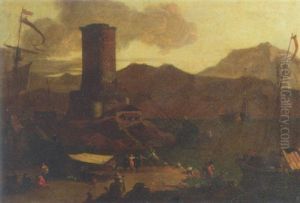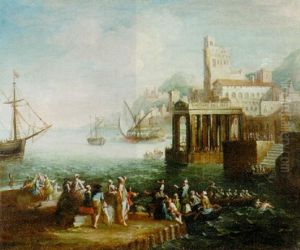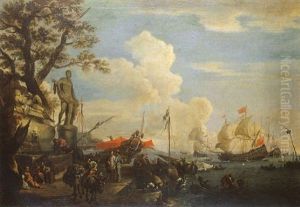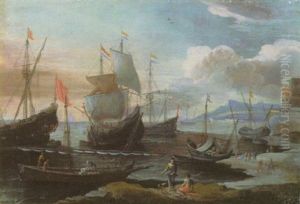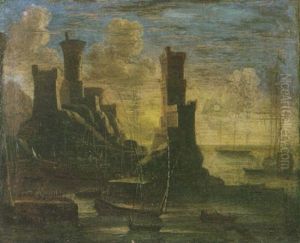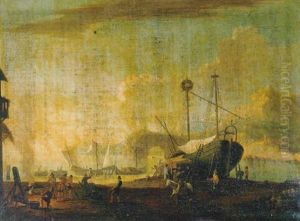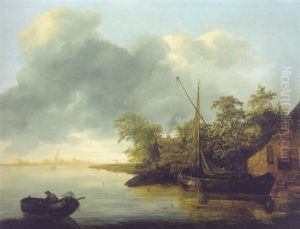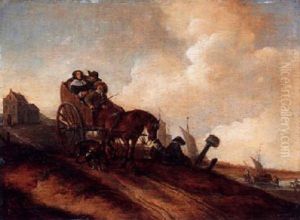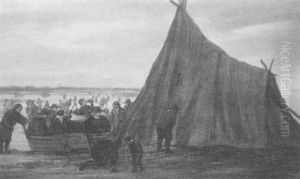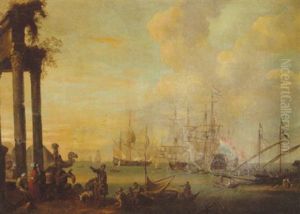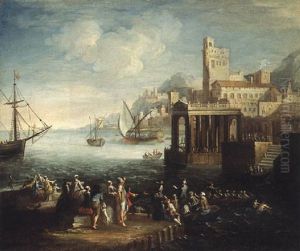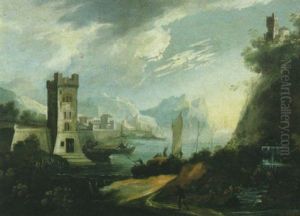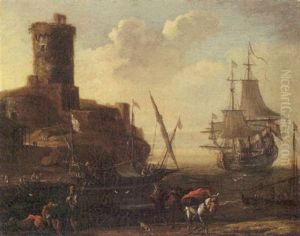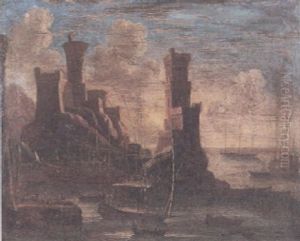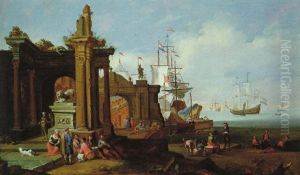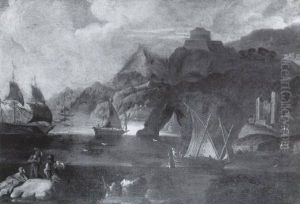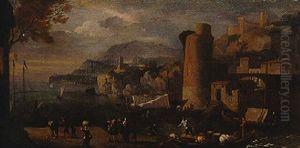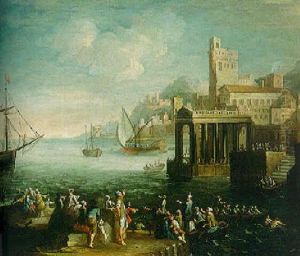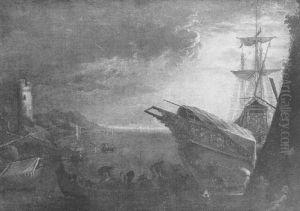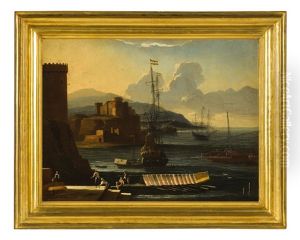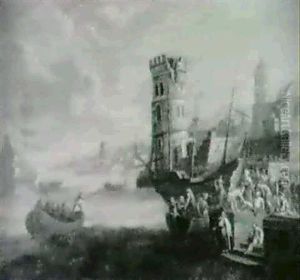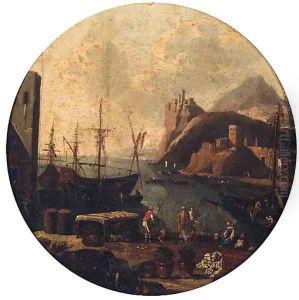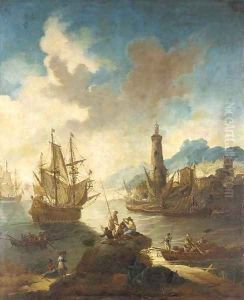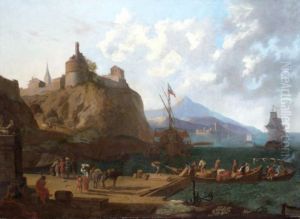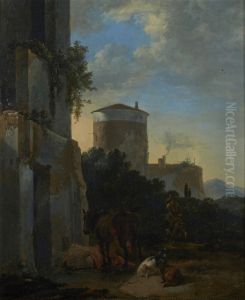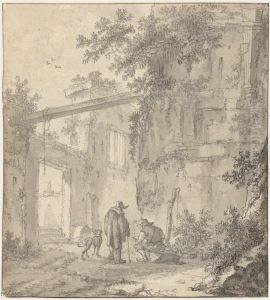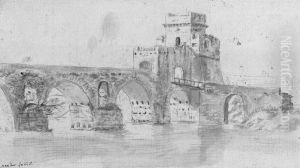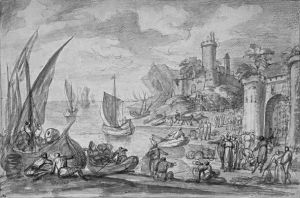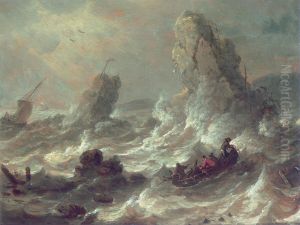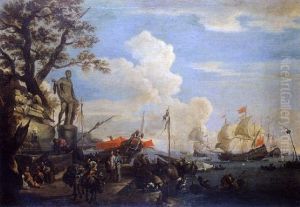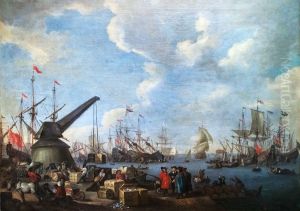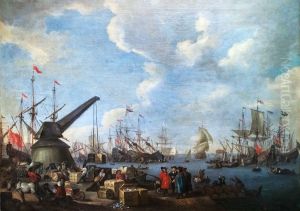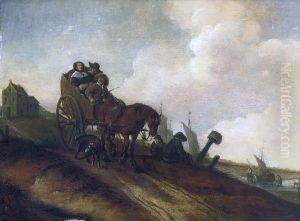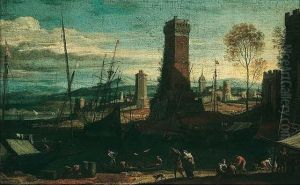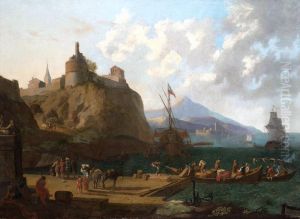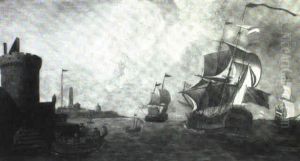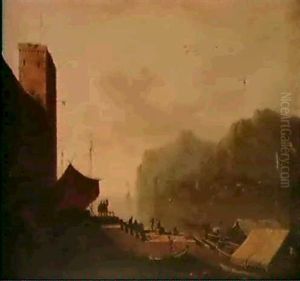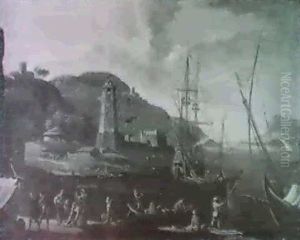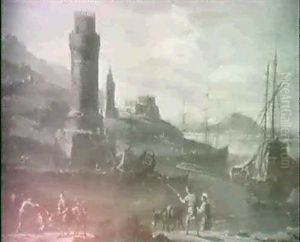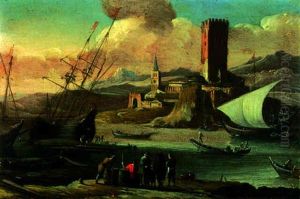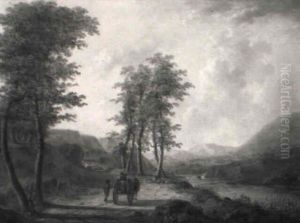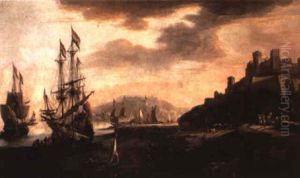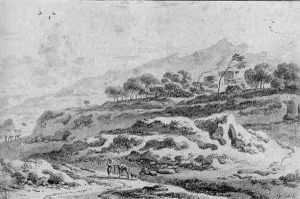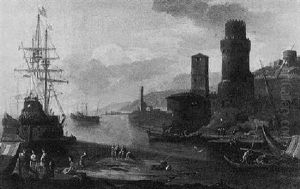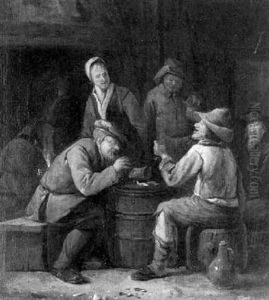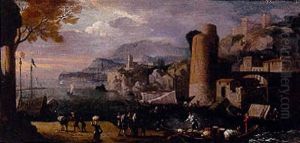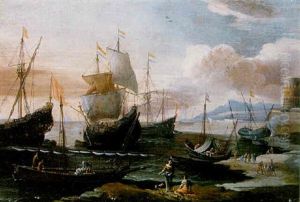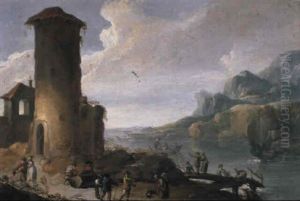Adriaen Van Der Cabel Paintings
Adriaen van der Cabel, born in Ryswyk, Netherlands, in 1631, was a distinguished Dutch Golden Age landscape painter. His work is notable for its meticulous detail, vibrant coloration, and dynamic portrayal of light, capturing the serene beauty and idyllic landscapes of his homeland and beyond. Van der Cabel's artistry reflects the period's fascination with nature, exploration, and the burgeoning field of natural science.
Van der Cabel's journey into the art world began under the guidance of Jan van Goyen, a prominent landscape painter of the time, in Leiden. This mentorship profoundly influenced his style and thematic preferences, embedding in him a deep appreciation for the subtleties of natural landscapes. In the mid-17th century, seeking broader horizons and inspiration, van der Cabel traveled extensively throughout France and Italy. His sojourn in Italy, particularly in Rome and Genoa, was transformative. During this period, he became part of the Bentvueghels, a society of mostly Dutch and Flemish artists residing in Rome, where he was nicknamed 'Berebom' due to his robust physique. The influence of Italian scenery and light is evident in his later works, which blend Dutch realism with Italianate brightness and atmospheric perspective.
After his Italian adventures, van der Cabel settled in Lyon, France, in the latter half of the 17th century, where he enjoyed a successful career. His landscapes, often embellished with classical ruins or pastoral figures, gained popularity among French and European patrons, showcasing his versatility and adaptability to different artistic tastes and environments. Despite his success abroad, van der Cabel's work remained deeply rooted in the Dutch landscape tradition, characterized by an acute observation of nature and a harmonious, often poetic, representation of the land.
Van der Cabel's legacy is marked by his contribution to the Dutch Golden Age of painting, a period celebrated for its remarkable output in quality and quantity of art. His landscapes not only capture the beauty of the natural world but also serve as a testament to the era's artistic explorations and cross-cultural exchanges. Adriaen van der Cabel passed away in Lyon in 1705, leaving behind a body of work that continues to be admired for its technical skill, aesthetic beauty, and historical value.
